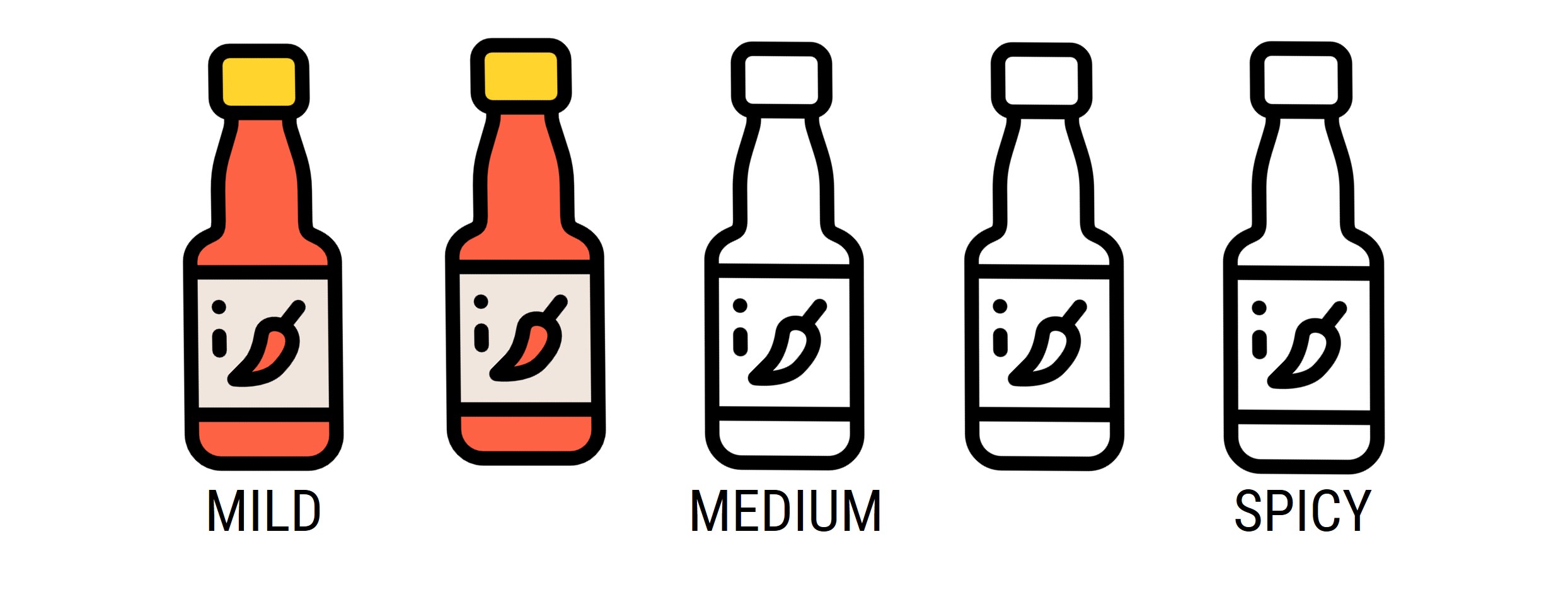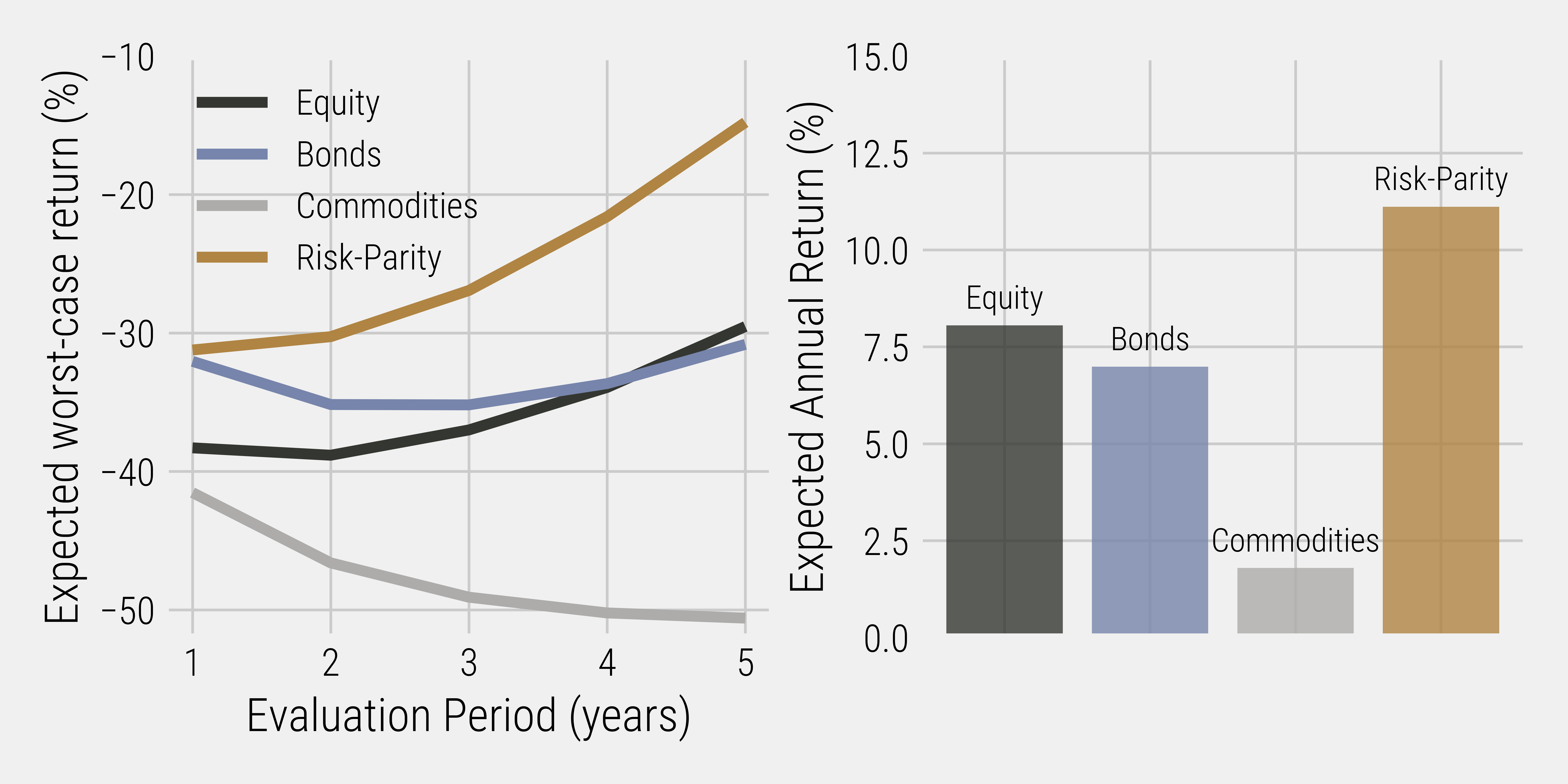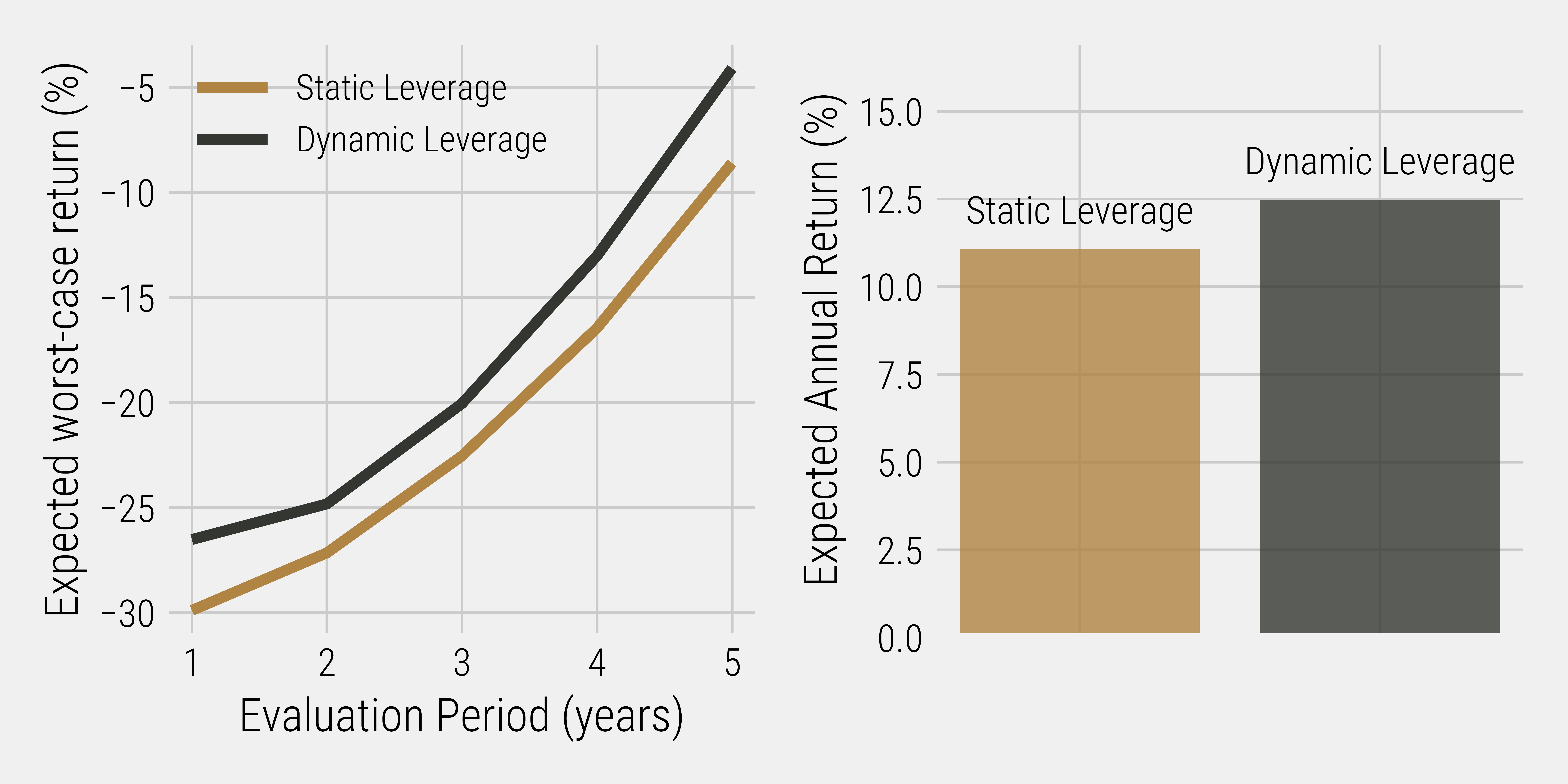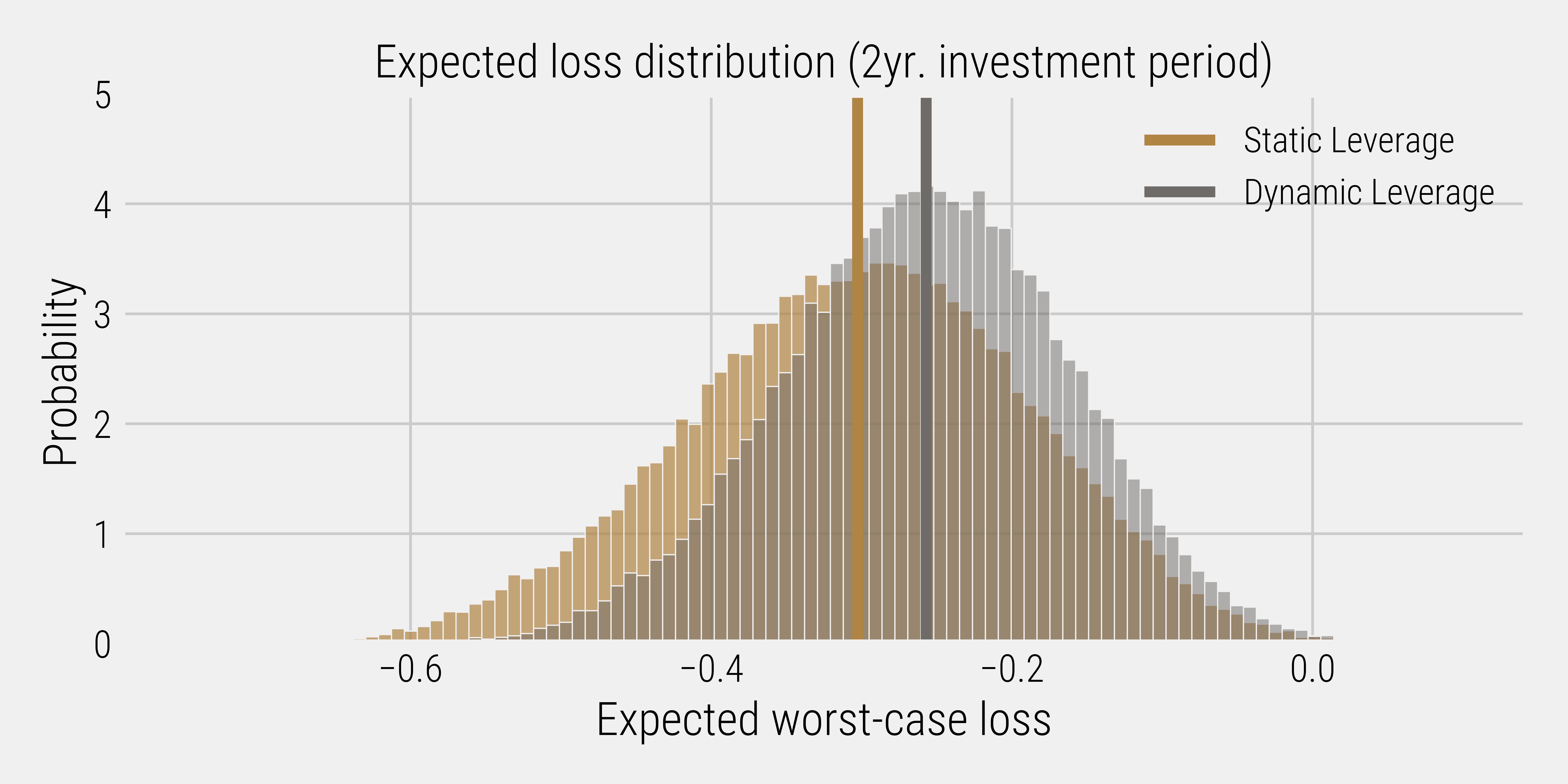Geek Level:

Read Time:

The Speed Read:
- Diversification is the first line of defence for an investment portfolio.
- Utilizing a risk-parity engine for portfolio construction creates a portfolio that reduces the severity of drawdowns while increasing expected returns.
- Volatility scaling to tactically adjust the portfolio’s gross exposure acts as a stabilizing force in time of market stress.
- Intellectual humility and evidenced-based capital stewardship are integral in building a robust and adaptive risk management framework.
In early 2020, very few people understood the gravity of the situation occurring in China and the devastating impact that the global pandemic would have. This new disease, and the subsequent efforts to contain it, impacted the entire world. It has changed the way we work, changed the way we interacted, and changed the way many of us thought about disease and healthcare. As the threat of COVID-19 subsides and begins to occupy less of our minds, its impact on the world is likely to persist. Companies learned that remote and hybrid work was a viable option. Medical science mobilized quickly and built a fearsome first line of defense, making it exciting to think about how the pandemic-fueled discoveries will compound and improve quality of care into the future. For investment managers, it reminded us why risk management and portfolio construction are so important. In some ways, it feels like we’re rising from the ashes: better, stronger, and more resilient.
Financial markets experienced extreme volatility and drawdowns that occurred at a dizzying speed. In the moment, it truly seemed that “this time is different.” The confluence of events that occurred in 2020 is unique in the sense that this exact sequence of events hadn’t happened before; however, unpredictable market events like this have occurred previously and will continue to happen in the future. The truth is, there will never be a shortage of potential risk factors in financial markets. We can point to equity valuations, rising inflation, massive government debt, and many other factors as possible indicators of the next financial meltdown. The consistent prediction of such events beforehand with any degree of certainty is extremely difficult, if not impossible. Markets may continue to rise for another decade, or they may crash next week. What we do know with certainty is that over a long enough time horizon, most investors are likely to experience major drawdowns that shake their confidence. As investment managers, we are obsessed with quantifying and understanding the concept of risk. Drawdowns can not only feel painful, but they can also lead to a permanent loss of capital if they coincide with inopportune events where investors require cash.
At Viewpoint, we pride ourselves on our multidisciplinary team, and value diversity of thought when it comes to solving problems. We often use perspectives from other professional fields outside the scope of finance to augment our investment process. Risk management is a specific area where we can learn from other disciplines, as avoiding catastrophic losses is ubiquitous. In this research note we turn to the fields of epidemiology and immunology to draw parallels between the lessons learned during the pandemic, and the way we manage risk in portfolios.
VACCINATE YOUR PORTFOLIO
One of the main takeaways from the COVID-19 pandemic has been the impact of vaccines on severe outcomes. Data compiled by the Centers for Disease Control and Prevention up to August 2021 shows that unvaccinated individuals are 29 times more likely to be hospitalized than their vaccinated counterparts. While that vaccine doesn’t completely prevent disease or severe outcomes, they do provide a significant reduction in overall health risk. The evidence concludes that vaccines should be the first line of defense from a risk management perspective, as there is little risk of adverse side effects from a probabilistic standpoint.
The parallel in portfolio management would be to implement a risk management framework to reduce the severity of what we call “left-tail” events (significant losses in portfolio value) while maintaining a similar level of upside participation. Because different asset classes react in unique ways to various macroeconomic events, they are less likely to experience significant drawdowns simultaneously. In an inflationary environment that is detrimental to nominal bonds, commodity prices may be rising. On the other hand, an environment of slowing global economic growth will significantly weigh on commodity prices while investors seek the protection of nominal bonds, driving up their value. Including both asset classes in your investment portfolio means that your worst-case outcomes in either of these scenarios won’t be as severe as holding the poor performing asset alone. This example may sound like the portfolio is sacrificing its return potential to manage downside risk, but in this analysis (hat tip to AQR for the idea), we show that when adjusted for risk, not only are the severity of “worst-case” outcomes greatly reduced, but average returns are improved by diversification. In this sense, diversification acts as a vaccine for your investment portfolio.
For this analysis, we will be using US equities, US bonds, and commodities as our opportunity set. We take monthly returns for these asset classes going back to 1973, and use a technique called stationary block bootstrapping to create a large set of alternative return paths for each asset class. The stationary block bootstrapping technique randomly stitches together different time periods of performance data (blocks) to simulate many (in our case, 50,000) different return paths that each asset and each portfolio in our analysis could take over a 30-year time horizon. The motivation behind this is to get a probabilistic view of how market events could unfold, instead of relying on the single path that markets took historically. We’ll then look at the average worst return for each asset class in our opportunity set, as well as a risk-parity portfolio construction of all asset classes over a 1-, 2-, 3-, 4-, and 5-year evaluation period. This allows us to answer the question: “What is the worst drawdown an investor can expect to experience over a 30-year investing time horizon?”

Figure 1: Expected Worst-case Scenarios and Returns for a 30-year Holding Period
Source: Bloomberg, VIP Internal.
Figure 1 shows the expected worst-case excess returns over 1–5-year time periods along with the annualized return an investor can expect to experience by investing in US equity, US bonds, commodities, and a risk-parity weighted portfolio of all three assets classes for 30 years. The volatility for each investment is scaled to 15 percent prior to resampling so that investor risk preferences are matched regardless of asset class. As you can see from the analysis, the worst outcome is far less severe in the diversified, risk-parity portfolio. An equity investor with a holding period of 30 years can expect to underperform the risk-free return by 30 percent over a single 5-year period. When scaled to the same risk, a bond portfolio can expect to lose a similar amount, and a commodity portfolio may lose more than 50 percent relative to the risk-free rate. However, a portfolio of these assets that is constructed using a risk-parity engine is expected to underperform far less, with a worst-case 5-year excess return of only -15 percent.
Like a mutating virus, it is difficult to anticipate what will cause the next crisis in financial markets and how individual asset classes will be impacted. A diversified (“vaccinated”) portfolio not only comes out with a less severe worst-case scenario from our simulations, but it does so while increasing the expected returns.
ADJUST EXPOSURE TO KEEP RISK CONSTANT
Now that we have established that a diversified portfolio scaled to an investor’s target risk level can reduce the impact of severe market conditions and increase return potential over the long-term, we can take this a step further and introduce an additional layer of risk management that tactically adjusts gross exposure when risk increases.
Everyone has an individual amount of risk they are willing to take when it comes to COVID-19. This may be dependent on factors such as the underlying health conditions of oneself or loved ones. Additionally, either through government mandates or self-regulation, as caseloads started to increase or the appearance of more virulent and contagious strains, such as the Delta variant emerged, interactions between people were constrained or reduced. This prevented the healthcare system from taking on a potentially catastrophic overload, such as those we sadly witnessed in some countries during 2020.
While controversial due to their impact on the overall economy (analogous to upside exposure in a portfolio), pandemic restrictions are an example of tactical exposure adjustment based on exogenous factors. At Viewpoint, we manage portfolio risk with similar underlying principles. When exogenous risk factors increase, usually in times of financial stress when volatilities and correlations are rising, our strategies reduce gross exposure to dampen risk. When those risk factors subside and there is a higher probability of harvesting a diversification premium, gross exposure can be increased to capture upside benefits. A previous blog post goes into the details of how a dynamic leverage strategy can adjust exposure to keep bet sizing constant. This tactical risk management process is akin to the decisions individuals were making during the pandemic. For example, we may think twice about going to a birthday party at someone’s home if cases had been increasing at a concerning rate, (increasing volatility) or if a new strain which was highly virulent (rising correlations with less diversification benefit).

Figure 2: Comparing Probable Outcomes Using Dynamic and Static Leverage
Source: Bloomberg, VIP Internal.
Figure 2 shows how you can use tactical risk dampening through volatility scaling to improve upon a portfolio that is constructed by using a static leverage ratio. In this analysis we are comparing a statically levered risk-parity portfolio simulated using daily data to a dynamically levered risk-parity portfolio going back to 1990. We see that relative to the analysis in Figure 1, the expected worst-case outcomes are less severe when using volatility scaling, and the expected return increases further. This analysis illustrates that by using tactical exposure adjustments we can further enhance the already “vaccinated” portfolio! Figure 3 shows the distribution of expected worst 2-year periods for static leverage and volatility scaled portfolios, and how utilizing volatility scaling cuts off a portion of left-tail distribution.

Figure 3: Comparing Probable Outcomes Using Dynamic and Static Leverage
Source: Bloomberg, VIP Internal.
The final and perhaps most important comparison we’ll make between our risk management process and the field of epidemiology is the vigilance in monitoring how things play out and the continued research into the efficacy of different risk management techniques. The research that was conducted and ultimately led to the widespread vaccine roll-out was nothing short of miraculous: the fortuitously timed culmination of a several-decades long research arc into mRNA vaccines. The speed at which epidemiologists around the world identify, classify, and work to understand new strains and their impacts is incredible. We have no delusions of grandeur in comparing what we do to the scientists who have allowed us to live somewhat normally through this pandemic. Instead, we draw the comparison because we strive for a comparable level of diligence and excellence.
The market is a highly complex living organism that acts as a voting mechanism to determine prices and is governed by human behaviour. It is constantly evolving and while everything we do is based in timeless economic and financial principles, there is some nuance in how strategies are implemented. We place a lot of importance on the principle of continuous improvement. Our investment ideas are tested with scientific rigor and augment our fundamental understanding of markets with cutting-edge data-science techniques. Every research project is heavily scrutinized before anything is implemented into our portfolios. Once something is implemented into an algorithm, it is continuously monitored to ensure it is working as expected. As things evolve and change, our investment strategies are stress tested and reviewed for potential areas of improvement.
We see value in staying vigilant and understanding the implications of changing market structure. Over the pandemic we have all witnessed examples of poor decision making and missteps by political leaders in response to changing facts and data, occasionally leading to tragic outcomes. It is difficult as humans to quickly update our world view or admit we are wrong when the facts change and in the face of uncertainty. In response to this limitation on the flawed reasoning faculties of human beings, we view our intellectual humility and our commitment to evidence-based capital stewardship as the ultimate risk-management tool. An endeavor which is supported by cutting edge research techniques and data science. Let’s all rise from the ashes together.
DISCLAIMER:
This blog and its contents are for informational purposes only. Information relating to investment approaches or individual investments should not be construed as advice or endorsement. Any views expressed in this blog were prepared based upon the information available at the time and are subject to change. All information is subject to possible correction. In no event shall Viewpoint Investment Partners Corporation be liable for any damages arising out of, or in any way connected with, the use or inability to use this blog appropriately.


